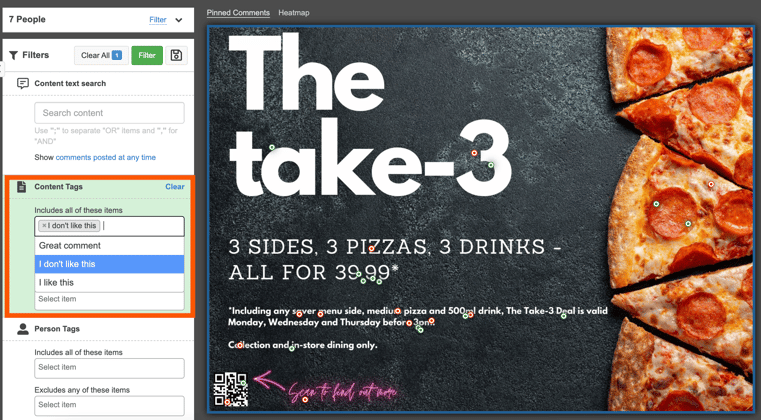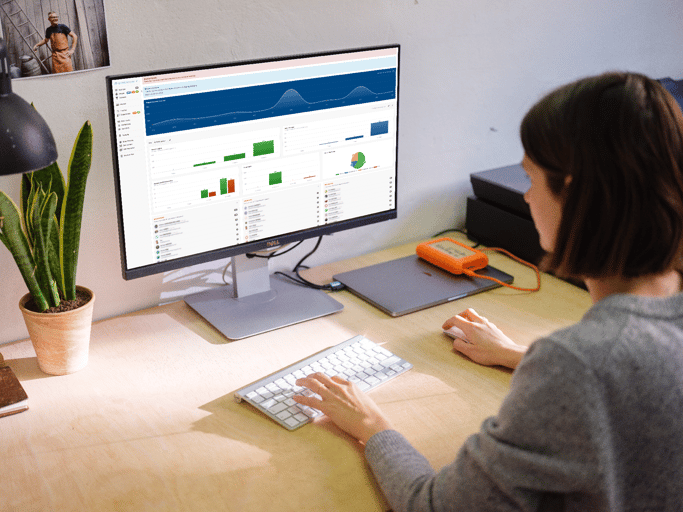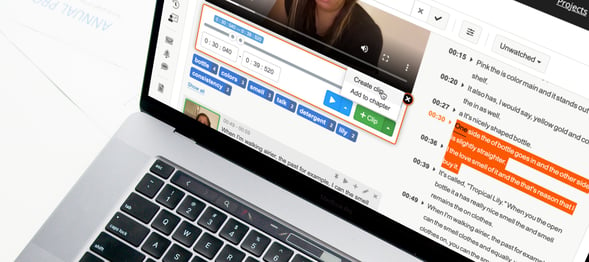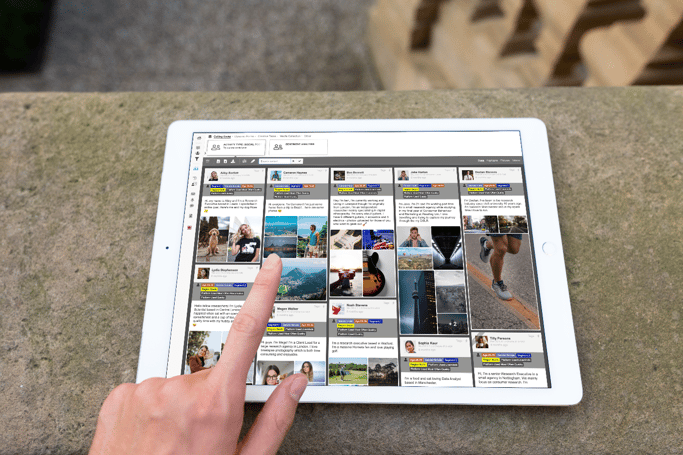How to make qualitative data analysis easy and simple

Contents
Qualitative research has always been the method in which collected data can be analysed to identify patterns that can greatly influence a product, audience or culture. The process of analyzing data and your research findings is critical when it comes to making decisions; this is why it's vital you make the process of analysing qualitative data as easy and as simple as possible.
When establishing which strategy is best suited to a campaign, it's important to reflect on both the traditional approach and modern methodologies as there are lessons to be learned in both techniques.
The traditional approach
Qualitative data analysis methods, when executed correctly, unearth a wealth of raw data which leaves researchers the time-consuming task of collecting and interpreting primary data. The traditional research process is one that still has its merits and we should never underestimate the human element of data collection and the ability to identify patterns that are specific to your qualitative inquiry; Traditional methods do yield a plethora of insight.

Traditional methods
Focus groups, interviews, case studies and observations are all staples in qualitative research and provide grounded theory to any researchers building a business case. Both quantitative analysis and qualitative data will always have their place in traditional research methods - identifying patterns and creating descriptive analysis from findings will always make end products stronger. In regards to qual, we should remind ourselves of the primary tools that are usually deployed.
Focus Groups/ Interviews
Detailed analysis can be executed and as researchers are in the room with the focus groups or conducting the interviews, they benefit from the social context of being able to read and individuals emotions and keep participants from straying off course.

Case Studies
Whether researchers are using them within a project or writing them as part of a business proposal, case studies present an opportunity to deploy qualitative methods to write a detailed report in support of a product or business case.
Observations
The process in which we analyze interactions can be done a number of ways but nothing can beat being in the room with an individual or group of people - exploratory research such as observations enable an analysis of human behaviour. This method proves to be especially beneficial in aspects such as lesson observations, consumer decision making and quality improvement.

Modern approaches to data analysis
Qualitative data analysis has been growing year on year and like any marketplace, competition breeds quality and advancement, There are a number of data analysis platforms available, but why should businesses and consumers take the plunge and try a range of data analysis methods? Below we outline some of the key benefits of a modern approach.

New tools in your belt
Approaches to qualitative study have always fostered creativity and ingenuity - researchers have a way of creating new data analysis techniques. The great thing about modern data analysis is that sky is indeed the limit in terms of developing new ideas and methodologies when collecting data and how to analyse it.
Traditionally, it was quantitative data that provided the method of acquiring large scale data; however new developments in qualitative studies have enabled researchers to acquire large scale samples with incredible insight.

1: Heat Maps
Heat maps are a great tool that enables participants to place digital pins on an image and identify patterns. This is a great form of data analysis when examining design, websites or a point of sale - just to name a few.
By completing this task digitally, a heat map will provide raw data containing 'hot spots' where participants have highlighted areas that you have asked them to - it's an effective and informative method of analyzing qualitative data.

2: Video
When we hear 'video' in reference to research, some will more than likely start to shudder at the idea of being recorded on camera whilst voicing their thoughts and opinions surrounding a product, service or experience.
Qualitative researchers have historically used interviews or 1-2-1's as a method of data collection for many years as it provides high-quality insight. But how do modern, online platforms enrich and improve the process?
The events of 2020 have shown that broadly speaking, individuals or groups are confident enough to meet on remote platforms such as Zoom, Teams or Skype - so how do we harness such data in a manner without disrupting consumer behaviour? The answer is to post questions within an online platform that requires the participant to submit a video response.
Let's be honest, if someone has agreed to take part in a campaign, then they more than likely have access to technology that includes a smartphone or a laptop with a camera. From here a solid research platform should take care of the data analysis process via features that include dialogue transcription and sentiment analysis.

Data analysis in qualitative research does not need to be a lengthy process that befits its reputation. Descriptive statistics such as sentiment analysis provides positive and negative feedback based on your questions quickly and enables you to start making decisions quickly and decisively.
Video makes up around 82% of the internet so any modern research campaign should factor in video content as part of its approach.
3: Intuitive Dialogue Boxes
Open-ended questions are a staple of qualitative research and enable a campaign to hear or read the thoughts and opinions of its sample. Collating the response can be a lengthy process depending on the sample size, the nature of what you are researching and the number of questions you are wanting to ask. However modern approaches to qualitative data analyses have meant that this is no longer so.
Similar to that of video, once your sample have responded you are able to perform sentiment analysis that analyzes qualitative data for positive and negative patterns.
4: Long and Short-Term Communities
Fully customisable and engaging communities provides research data where a qualitative researcher can take a longitudinal approach. Communities are able to take part in a wide range of activities and you are able to customise the domain to make it look and feel like it's your own website.
You can track perceptions and how they change over time all via a moderator and choose whether you want users to engage with each other.
It is not uncommon for a campaign to last months depending on your research objectives so do not be afraid to keep extending if you feel you are getting good content.
5: Ideation
The ideation process is facilitated through an "idea" activity. You may find that an idea has been established from a short-term community that you'd like to explore - using a modern approach, participants rank ideas and concepts so that you have a number of winning ideas.

Modern approaches provide greater insight faster
Qualitative analysis does not need to take up your time - modern approaches enable you to receive responses in real-time so that you can start to analyze data right from the get-go. As part of any campaign, you should be given access to a dashboard that provides you with the tools to start your data analysis.
Your dashboard is the start of your qualitative data analysis and shows you how your sample is responding or engaging to your research questions; it'll display all data collected and the level of engagement from your sample.
The modern approach of using a dedicated platform empowers the researcher to track respondent behaviour and the wider community.

Adaptability
Whether it is discourse analysis, narrative analysis or quantitative research, modern approaches enable you to be adapt to the environment and the sample; data collection can be refined to the needs of the campaign and the sample on the go if you feel you feel need to delve deeper. Data collection and analysis is organic - if you need further analysis, you can extend a campaign, create an additional focus group or short-term community.

Content analysis
Qualitative data analysis is reliant on the content you receive from your sample - your research findings are the reason you started the campaign in the first place. The collection of qualitative data needs to be examined and scrutinised in a way that enhances your campaign - this is why it's important you deploy a platform that does this for you as much as possible.
Research platforms can now perform a wide range of tasks so you do not need to - whether it's transcription, sentiment analysis or heat maps ensure you ask your provider to demo the range of qualitative data analysis methods on offer. Furthermore, ensure that the data analysis can be performed during a campaign and not just at the end.

Plan your campaign
Qualitative studies and the methods in which data collected is scrutinised provide high-quality insight when executed in the correct way. What is key is you choose a platform that makes Qualitative data analysis simple and effective - there is no point in blowing your budget on collecting a large body of research data if it going to take you weeks or months to dissect.
Research objectives
This may sound obvious, but starting a qualitative data analysis project with clear, thought-through research objectives is key to its success. The start of a campaign is crucial to work with your team, stakeholders and platform provider to ensure you are creating the best campaign possible.
When creating a research objective consider the data preparation that will be involved in terms of the back end of a campaign - one eye on this will help you ask more efficient questions.

Screener Questions
When you are building your campaign, be prepared to try out a range of methods and consider the narrative of your questions. Screener questions are a great way to isolate who is included in your sample allowing you to refine it if there are individuals who do not meet your research criteria.
They also mean you can collect key contact data so that you can invite them to separate 'break-out' campaigns if you feel they are providing good and relevant engagement.

Greater insight at the click of a button
Thematic analysis, along with entity and sentiment analysis captures insight that represents how your sample feels, think and act - all crucial elements that matter in a campaign. Whichever approach you are deploying will enable you to isolate patterns and trends in a simple and effective way.
Statistical techniques allow your qualitative research to be also quantified. Quantitative researchers (or qualitative) can search interview transcripts in their qualitative data for keywords or sentiment which can, in turn, be used in data preparation.

Data analysis
A campaign is a jigsaw puzzle of qualitative data and quantitative data where you are attempting to ask the right questions to gain the information you require. In the early stages of planning always have one eye on data analysis as it'll help shape the range of questions you are wanting to ask. When choosing a research platform ensure that you get a deep understanding of the formats in which you can download your results.
Standard formats that you should be enquiring about are:
1: xls / xlsx - the standard excel format.
2: MP4/.MOV - video file formats
3: Doc - word document that will contain transcriptions.
4: Filters - this will be used when you are wanting to isolate key elements of collected data rather than an entire section.
Qualitative research can get extensive - it is not like quantitative data where you can display it in nice infographics or charts. The platform will assist you in getting to that point but always consider data analysis in your planning as it'll shape the questions you want to ask and the methodology you want to deploy.

Components of data analysis
Always consider the fundamentals of data analysis when creating your campaign.
- credible - is the research method or question deployed a recognised way of working? Will it add value?
- analysable - does the question asked able to be examined and scrutinised?
- transparent - is it easy to understand and does the applicant know what they are doing?
- useful - are the range of questions you are asking relevant to your research objectives? If it isn't, don't use it.
These four are the building blocks in which you create your campaign and obtain qualitative data - always refer back to these.
Qualitative Analysis is, in part, the determination of non-numerical information; it can be a lengthy process and there will be times that you will need to persevere. Throughout a campaign, you may need to scale up or scale down a number of factors such as sample, amount of questions, duration and type of question. As mentioned before, modern qualitative research campaigns should be organic and can be adapted to the sample or audience you are targeting.
Often the provider you are working with will have worked on similar campaigns - although they will have more than likely signed NDR's, it's their job to offer advice and guidance so ask as many questions as possible, get a solid grounding on what you can and cannot do. Most researchers know what they want, but if this is your first time venturing into modern ways of qualitative data collection, take your time and meet with a range of providers.
For further reading scan through some of our other blogs and read up on how qualitative data can help you.